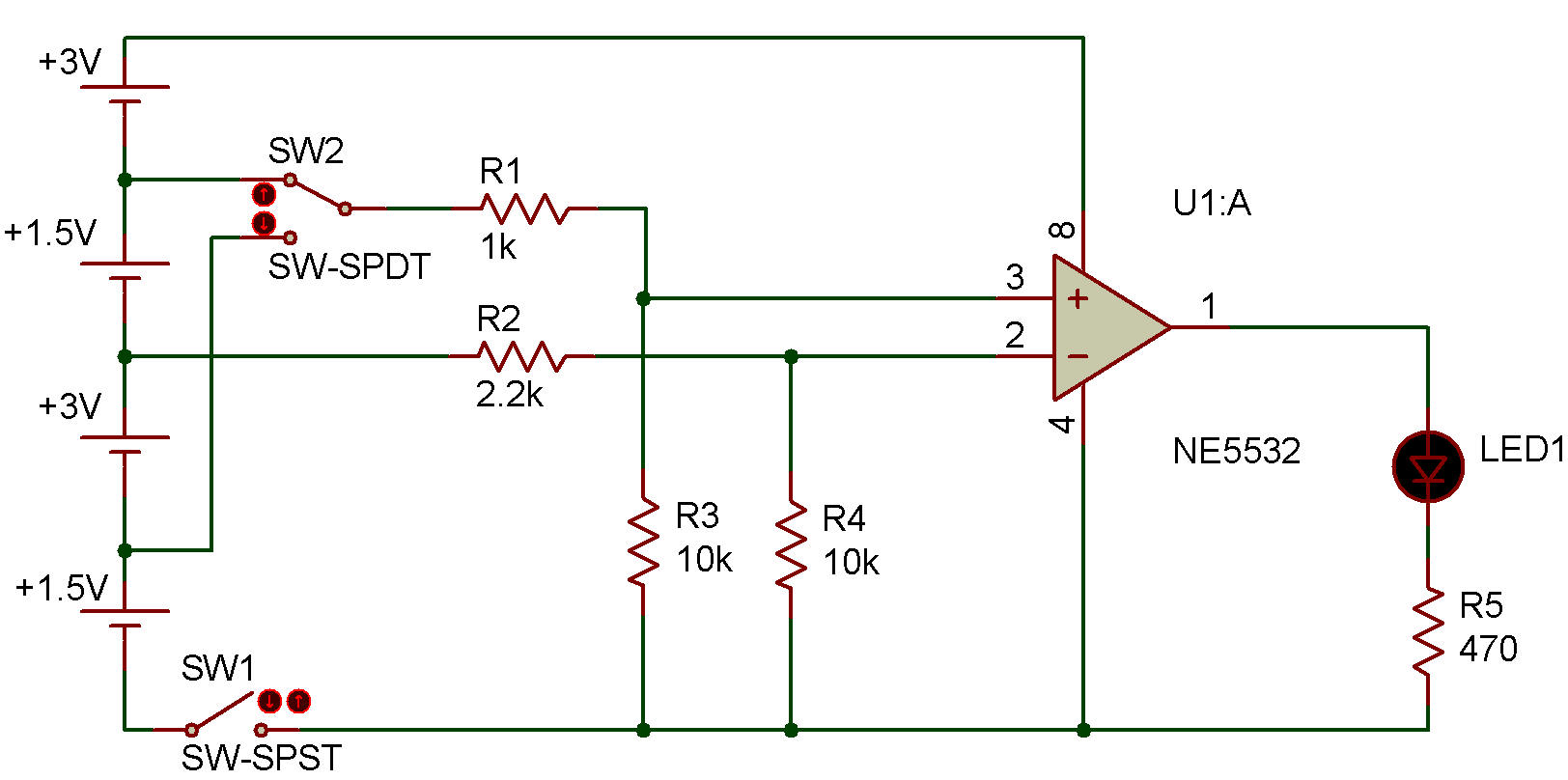

Comparator
NE5532

For this section you will need some basic knowledge about the operational amplifier integrated circuit. First, we can use one power source for both the circuit and the IC, or we can use separate power sources.
The operational amplifier can be used as a noninverting amplifier, an inverting amplifier, or a differential amplifier. A noninverting amplifier, reproduces an input signal as an output signal without any change in polarity. An inverting amplifier does the opposite: its output has the reverse polarity of its input. The differential amplifier has an output that is the difference between the strengths of the two input signals.
A comparator compares two voltages and tells you which one is stronger than the other. We call the controlled voltage the reference voltage because we use it as a reference for measuring other voltages. The voltage that is compared is the input voltage.
The reference voltage in this project is about 3.7V. It is connected to terminal 2 of one of the integrated circuits. Input voltage flows to terminal 3 of the same IC. The LED lights if this voltage is higher than the reference voltage, and stays off if it is lower. In this circuit the operational amplifier acts as an inverting amplifier for the reference voltage to keep the LED turned off, or as a non-inverting amplifier to light the LED.
Build the project and then set the switch to position A. This provides an input of 6V. The LED lights because the input voltage is higher than the reference voltage. Now slide the switch to position B. This provides an input voltage of 1.5V. The comparator IC does not let the current pass because the input voltage is now lower than the reference voltage—the LED remains off.
